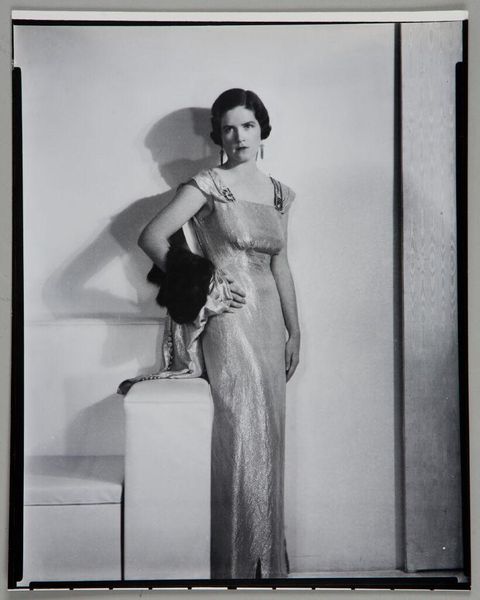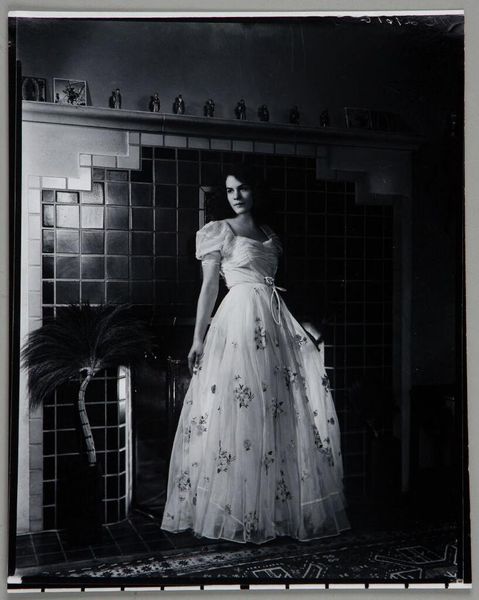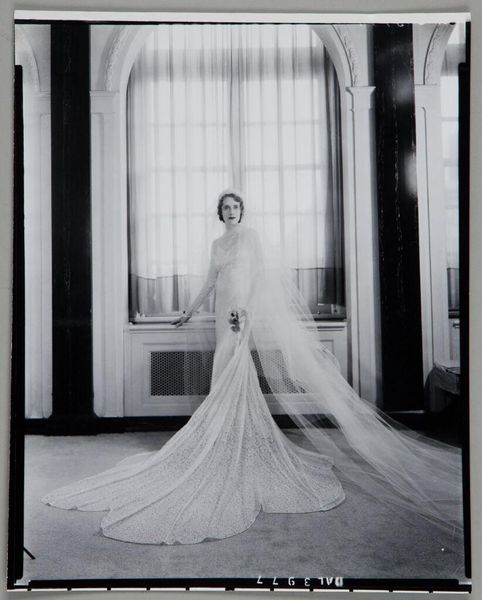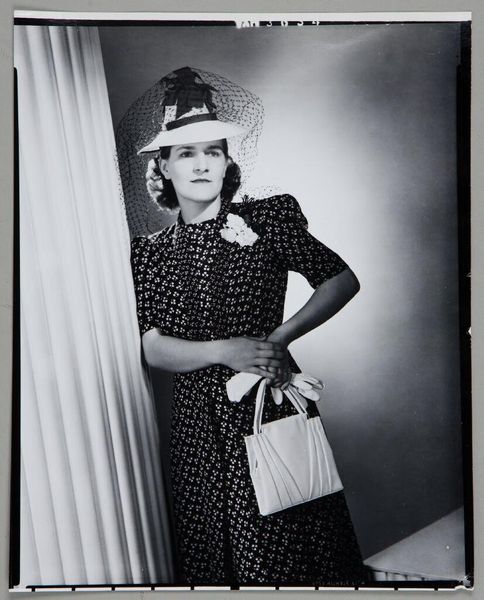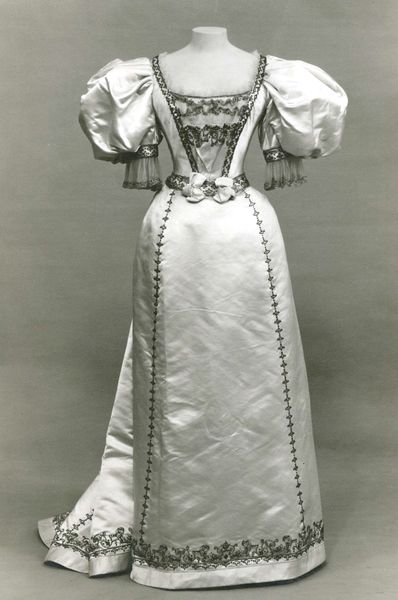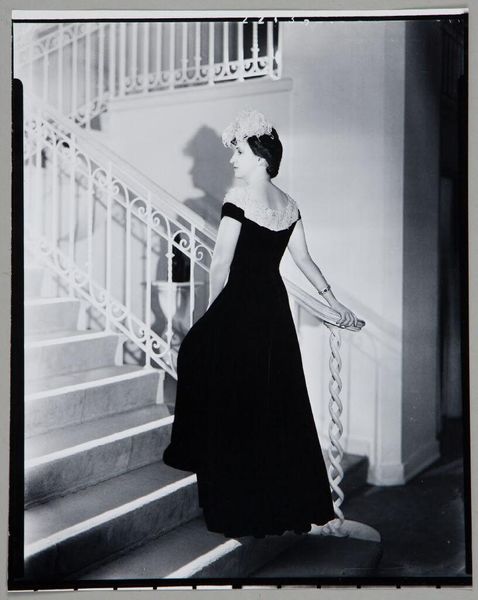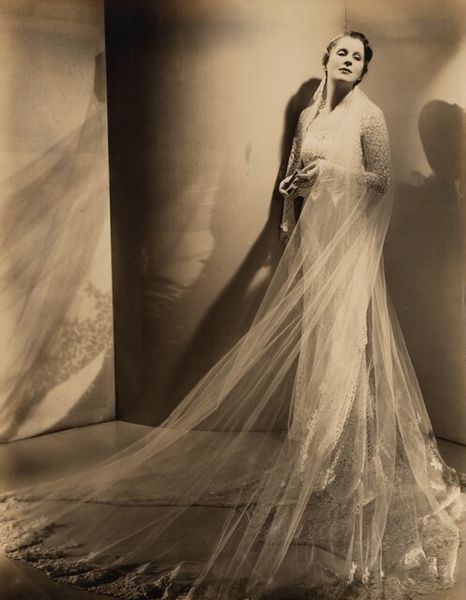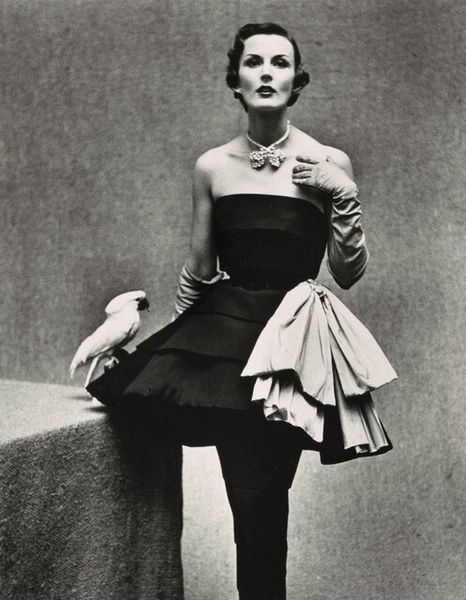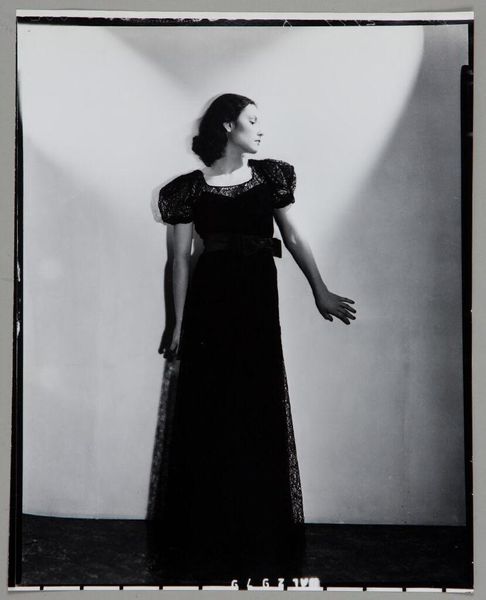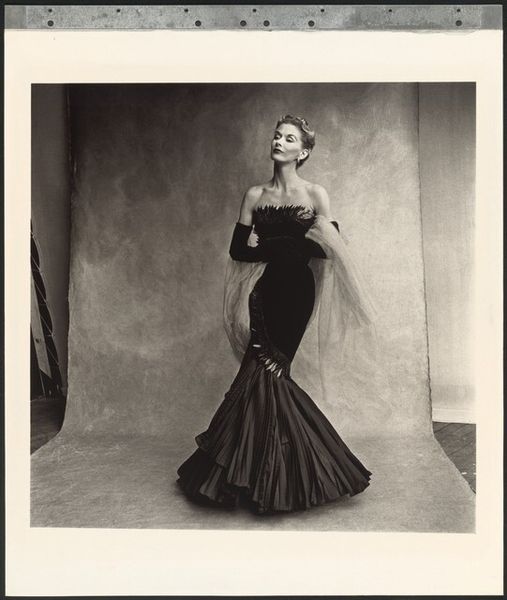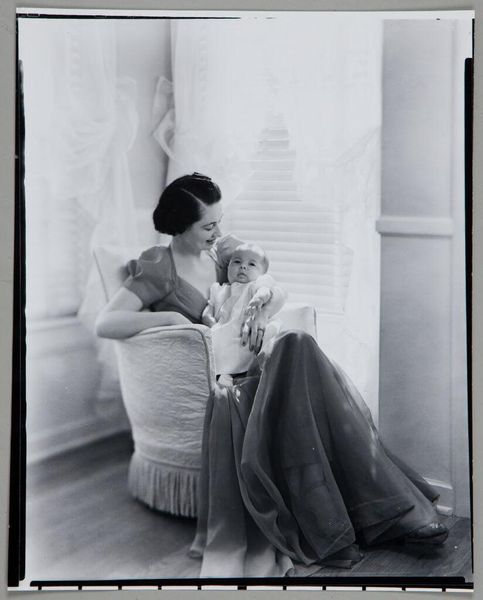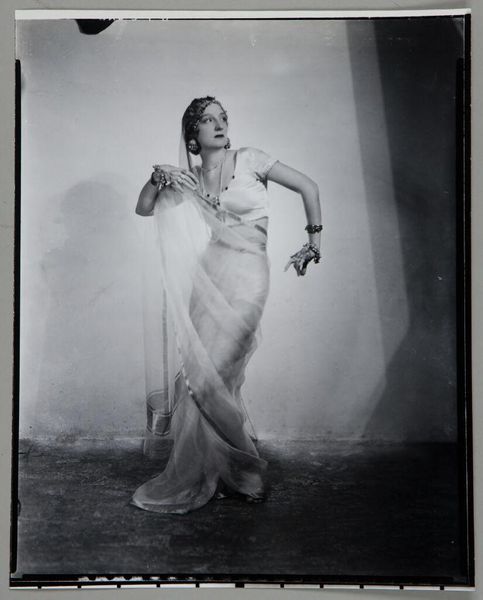
Gloria Vanderbilt. Hoping to embark upon a stage career, the 30-year-old daughter of the late Reginald Vanderbilt and wife of Conductor Leopold Stokowski is scheduled to act at two theaters in Ferenc Molnar's play, "The Swan" 1954
0:00
0:00
photography
#
portrait
#
photography
#
historical fashion
Dimensions: image: 48 × 35.9 cm (18 7/8 × 14 1/8 in.)
Copyright: National Gallery of Art: CC0 1.0
Curator: Let's spend some time with this captivating 1954 photograph by Gordon Parks titled "Gloria Vanderbilt. Hoping to embark upon a stage career, the 30-year-old daughter of the late Reginald Vanderbilt and wife of Conductor Leopold Stokowski is scheduled to act at two theaters in Ferenc Molnar's play, \"The Swan\"". Editor: My immediate reaction is one of delicate restraint. The soft focus, the intricate lace, and her reserved expression create a sense of contained elegance. It feels almost like a carefully constructed facade. Curator: Exactly. Consider the photographic printing processes available to Parks at the time. The contrast manipulation he could achieve in the darkroom. How might that speak to Vanderbilt's crafted public image? Every detail, from the positioning to the props used, indicates a specific intent and production of an elite, social class. Editor: The lace itself acts as a visual symbol, doesn't it? Its historical association with aristocracy, coupled with the white gloves, evoke images of European courtly traditions and a particular code of behavior. It seems meant to project sophistication. Curator: That resonates strongly when thinking about the broader historical context, doesn't it? Parks’ work frequently challenged social inequality and often juxtaposed privilege against the realities of poverty. In capturing Vanderbilt, a scion of immense wealth, there's an undeniable conversation being opened around class and representation. The textile industry was a major employer – often with very harsh working conditions at that time. The luxury signified by this dress, purchased at enormous financial cost, becomes immediately complex when viewers recall the costs elsewhere. Editor: Yes, and that’s intensified by her expression. It is ambiguous, suggesting both vulnerability and a steely resolve. This hints at a self-awareness beneath the carefully constructed surface of her social persona. What do you make of the title's emphasis on Vanderbilt's aspirations as a stage actress? It feels almost as if she were enacting the drama and playfulness found in her work in “The Swan.” Curator: Well, I think it really reinforces the element of performance. The material conditions and the labor involved in producing images like this often go unnoticed; she is, quite deliberately, presenting herself for our consumption. Editor: So, we see both the material wealth and the projection of status as inherent aspects of a constructed image. Curator: Precisely. Considering Parks' body of work and Vanderbilt's social standing offers an invitation into broader discourses surrounding visibility, wealth, class, and labor. Editor: The photograph leaves one reflecting on how the external presentation often serves to conceal internal complexities and realities of a world carefully constructed to be on display.
Comments
No comments
Be the first to comment and join the conversation on the ultimate creative platform.
